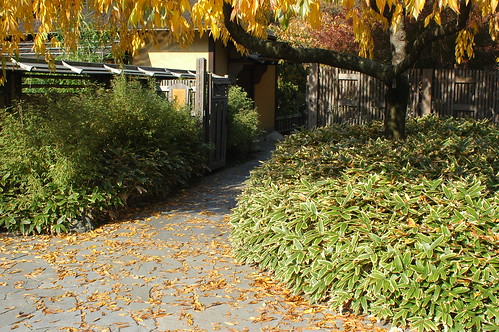Stone basin with cherry leaves, outside the entrance to the Japanese Garden, Brooklyn Botanic Garden
Another “lost” set of photos which I’d uploaded to Flickr, but never blogged. These are from a year-and-a-half ago, in November of 2005. Again, irritating that the “improved” Blogger won’t let me back-date them to the date I took the photos.
My parents were visiting with us, so they show up in several photos.
My parents walking toward the entrance of the Japanese Garden
Pond and bridge in the Japanese Garden
Torii seen from the Viewing Pavilion in the Japanese Garden

My parents in the viewing pavilion
Pond and Torii from the Viewing Pavilion
Southern approach to the entrance to the Japanese Garden






